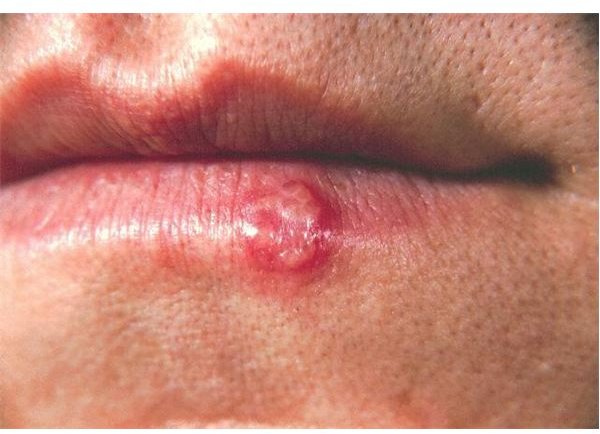What Does Herpes Look Like?
Herpes is a sexually transmitted disease caused by one of two viruses: herpes simplex type 1 and herpes simplex type 2. It is one of the most common sexually transmitted diseases and it is estimated that 25 percent of adult Americans have this disease and one in five Americans 12 years of age and older are affected by this disease. Ultimately, 45 million Americans are living with herpes. This disease is classified as a virus, it is a recurrent viral infection, and there is currently no cure, though it can be managed. The most common question associated with this infection is “what does herpes look like?”
Symptoms
Most patients who have been infected with this viral infection have no symptoms. However, when they experience their first outbreak, which is most often the most severe, they can experience itching or pain around the affected area, blisters, open sores (also referred to as ulcers), and small, red bumps. The most commonly affected areas include the genitals, inner thighs, mouth, and buttocks.
The small, red bumps will rupture and turn into ulcers that bleed or ooze. Eventually, these will become scabs and the ulcers will heal. When these ulcers are present, urination can be painful and the affected area can be tender and painful. Once the infection clears, these symptoms will go away.
Women with this infection may have erupting sores on their external genitals, anus, vaginal area, buttocks, or cervix. Men may have erupting sores on the scrotum, anus, inside the urethra, on the penis, or the buttocks.
During a patient’s first outbreak, they may experience flu-like symptoms, such as muscle aches, headache, and fever. Patient’s may also experience swollen lymph nodes in their groin area during their first outbreak.
Identification and Appearance
**
Oral Herpes
Oral herpes resembles a single blister, or in some cases, will resemble a cluster of blisters. These blisters, often referred to as oral lesions or cold sores, are most often seen on the lips, but they can also be seen on the nose, chin, cheeks, or anywhere else on the face, and are often painful.
Many patients confuse oral herpes for a small cut or crack in the skin, insect bites, chapped lips, or pimples. Sometimes it resembles tiny, red skin bumps that do not become blisters.
Genital Herpes
Genital herpes covers the external genital area, the anal area/anus/buttocks, the urethra (in men), the cervix (in women), the vaginal area, the penis, the inner thighs, and the scrotum. During a visual examination, this disease resembles small fluid-filled lesions (ulcers) that look similar to water blisters or pimples. They scab, after crusting over, similar to a small cut on top of swollen, red skin. They can take up to 14 days to heal completely, and sometimes it can take longer. Tingling, itching, and burning may be present on and in the area of the blister when they are present.
The many looks and appearances of herpes, both oral and genital, include:
- One or more rashes.
- Dry crust ( occurs when the blisters/lesions are healing).
- One or more small cuts.
- One or more small bumps (typically on the vagina or penis).
- One or more fluid-filled blisters (fluid can be whitish, clear, or reddish).
- One or more sores (raw or tender when touched).
- Early redness or a difference in how the skin looks when compared to the surrounding skin.
- One or more wet ulcers (occur when the tops of existing blisters come off).
- Swelling.
Diagnosis
A physical exam and laboratory tests are most often used. Laboratory tests include a viral culture, a polymerase chain reaction test, and blood tests.
Treatment

Treating herpes involves the use of oral antiviral medications, such as Zovirax, Valtrex, and Famvir, prescribed by a medical doctor.
The goals of treatment include:
- Healing sores quickly after a patient experiences their initial outbreak.
- Decreasing the duration and severity of symptoms during outbreaks.
- Decreasing amount of outbreaks.
- Reducing the chance of a patient transmitting herpes to others.
Resources
Mayo Clinic. (2010). Genital Herpes. Retrieved on January 24, 2010 from the Mayo Clinic: https://www.mayoclinic.com/health/genital-herpes/DS00179
